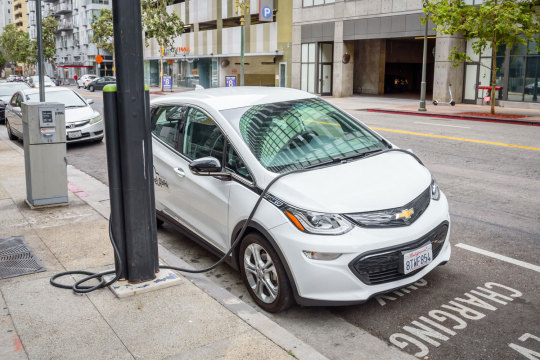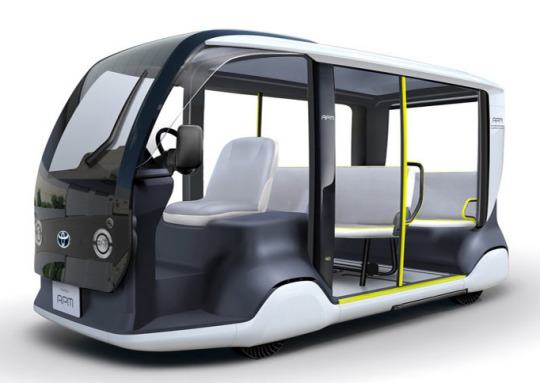#Electric Vehicles 2023
Explore tagged Tumblr posts
Text
Though the EV markets worldwide vary, it’s more inexpensive than conventional vehicles. But for all good reasons, EVs or electric vehicles are better choices than fossil-fuelled equivalents. They have low maintenance expenses as they do not have many moving parts as the internal combustion car. The servicing needs are also lesser than conventional counterparts.
#electric vehicles in UK#electric vehicles for sale#electric vehicles 2023#electric vehicles list#electric vehicles advantages#electric vehicles benefits#best electric vehicles
0 notes
Text
youtube
#electric vehicles#electric cars#electric car#best electric cars#top 10 electric cars#best electric vehicles#new electric cars#electric vehicle#electric cars 2022#top 10 electric vehicles#top 10 electric vehicles 2022#top 10 electric vehicles in india#best electric car#new electric vehicles#electric vehicles 2023#best electric cars 2022#electric cars 2023#electric car review#mini electric vehicle#top 10#top 10 electric suvs#top 10 mini evs#evs#uptet evs#super tet evs#uptet evs classes#mini evs#super tet evs classes#uptet evs practice set#super tet evs playlist
1 note
·
View note
Text






Yamaha Tricera Concept, 2023. An electric tricycle prototype that can be steered by all three wheels for the ultimate Kando*- filled driving experience. "The TRICERA’s human-centric packaging was derived from the level of controllability felt when changing the centre point of the vehicle’s turning circle via the in-phase and counter-phase of the rear wheel. "
*A Japanese word for the simultaneous feelings of deep satisfaction and intense excitement that we experience when we encounter something of exceptional value.
#Yamaha#Yamaha Tricera#concept#electric tricycle#3 wheeler#3 wheel steering#prototype#design study#open roof#EV#electric vehicle#Kando#2023#futuristic#Tricera Concept
84 notes
·
View notes
Photo

EV adoption by US county, Q3 2023.
130 notes
·
View notes
Text

April 2023 JAPAN HOKKAIDO SAPPORO
© KOJI ARAKI Art Works
Daily life and every small thing is the gate to the universe :)
#April#2023#April 2023#JAPAN#HOKKAIDO#SAPPORO#roadside tree#tree#traffic light#telephone pole#electrical wire#crane vehicle#construction site#sky#cloud#group of buildings#building#photographers on tumblr#b&w photography#black and white photography#monochrome photograph#original photography#photography#koji araki art works#PENTAX K1#SIGMA 15mm 2.8 EX Fisheye#Fisheye#SIGMA#PENTAX
57 notes
·
View notes
Text
What Percentage of Cars Sold in 2023 Were Electric?
The automotive industry has been rapidly shifting towards electric vehicles (EVs), driven by increasing environmental concerns, technological advancements, and government incentives. The year 2023 marked a significant milestone in this transition. This transition has raised the question: What Percentage of Cars Sold in 2023 Were Electric? Let’s dive into the data to understand the impact and…

View On WordPress
#automotive industry#automotive trends#battery production#battery technology#car manufacturing#car market trends#car sales 2023#charging infrastructure#charging networks#China EV market#Clean Energy#cobalt#consumer acceptance#electric cars#electric mobility#electric vehicles#environmental awareness#Environmental Impact#Europe EV market#EV adoption#EV incentives#EV maintenance#EV technology#EVs#Ford#future of cars#General Motors#global sales#Government Incentives#green alternatives
2 notes
·
View notes
Text
Robert Downey Jr. strikes a pose at the premiere of Downeys Dream Cars
June 16, 2023
3 notes
·
View notes
Text
Fuel Efficiency Unleashed: 2023's Leading Cars for Eco-Conscious Consumers
As the world continues to confront the looming climate crisis, eco-conscious consumers are increasingly prioritizing fuel efficiency in their vehicle choices. The automobile industry has responded to this demand by rolling out a range of cars that not only offer impressive fuel economy but also embrace sustainable technologies. In 2023, several standout models have emerged as leaders in the class…
#2023s#benefits of electric cars#Best fuel-efficient cars#best SUVs for families#car buying guide#car insurance tips#Cars#common car problems and solutions.#Consumers#DIY car repair tips#EcoConscious#Efficiency#electric vs. hybrid vehicles#Fuel#future of autonomous vehicles#how to choose the right tires#how to maintain your car#latest car models 2024#Leading#most reliable car brands#top car safety features#Unleashed#vintage car restoration
0 notes
Text
Study: EV charging stations boost spending at nearby businesses
New Post has been published on https://thedigitalinsider.com/study-ev-charging-stations-boost-spending-at-nearby-businesses/
Study: EV charging stations boost spending at nearby businesses


Charging stations for electric vehicles are essential for cleaning up the transportation sector. A new study by MIT researchers suggests they’re good for business, too.
The study found that, in California, opening a charging station boosted annual spending at each nearby business by an average of about $1,500 in 2019 and about $400 between January 2021 and June 2023. The spending bump amounts to thousands of extra dollars annually for nearby businesses, with the increase particularly pronounced for businesses in underresourced areas.
The study’s authors hope the research paints a more holistic picture of the benefits of EV charging stations, beyond environmental factors.
“These increases are equal to a significant chunk of the cost of installing an EV charger, and I hope this study sheds light on these economic benefits,” says lead author Yunhan Zheng MCP ’21, SM ’21, PhD ’24, a postdoc at the Singapore-MIT Alliance for Research and Technology (SMART). “The findings could also diversify the income stream for charger providers and site hosts, and lead to more informed business models for EV charging stations.”
Zheng’s co-authors on the paper, which was published today in Nature Communications, are David Keith, a senior lecturer at the MIT Sloan School of Management; Jinhua Zhao, an MIT professor of cities and transportation; and alumni Shenhao Wang MCP ’17, SM ’17, PhD ’20 and Mi Diao MCP ’06, PhD ’10.
Understanding the EV effect
Increasing the number of electric vehicle charging stations is seen as a key prerequisite for the transition to a cleaner, electrified transportation sector. As such, the 2021 U.S. Infrastructure Investment and Jobs Act committed $7.5 billion to build a national network of public electric vehicle chargers across the U.S.
But a large amount of private investment will also be needed to make charging stations ubiquitous.
“The U.S. is investing a lot in EV chargers and really encouraging EV adoption, but many EV charging providers can’t make enough money at this stage, and getting to profitability is a major challenge,” Zheng says.
EV advocates have long argued that the presence of charging stations brings economic benefits to surrounding communities, but Zheng says previous studies on their impact relied on surveys or were small-scale. Her team of collaborators wanted to make advocates’ claims more empirical.
For their study, the researchers collected data from over 4,000 charging stations in California and 140,000 businesses, relying on anonymized credit and debit card transactions to measure changes in consumer spending. The researchers used data from 2019 through June of 2023, skipping the year 2020 to minimize the impact of the pandemic.
To judge whether charging stations caused customer spending increases, the researchers compared data from businesses within 500 meters of new charging stations before and after their installation. They also analyzed transactions from similar businesses in the same time frame that weren’t near charging stations.
Supercharging nearby businesses
The researchers found that installing a charging station boosted annual spending at nearby establishments by an average of 1.4 percent in 2019 and 0.8 percent from January 2021 to June 2023.
While that might sound like a small amount per business, it amounts to thousands of dollars in overall consumer spending increases. Specifically, those percentages translate to almost $23,000 in cumulative spending increases in 2019 and about $3,400 per year from 2021 through June 2023.
Zheng says the decline in spending increases over the two time periods might be due to a saturation of EV chargers, leading to lower utilization, as well as an overall decrease in spending per business after the Covid-19 pandemic and a reduced number of businesses served by each EV charging station in the second period. Despite this decline, the annual impact of a charging station on all its surrounding businesses would still cover approximately 11.2 percent of the average infrastructure and installation cost of a standard charging station.
Through both time frames, the spending increases were highest for businesses within about a football field’s distance from the new stations. They were also significant for businesses in disadvantaged and low-income areas, as designated by California and the Justice40 Initiative.
“The positive impacts of EV charging stations on businesses are not constrained solely to some high-income neighborhoods,” Wang says. “It highlights the importance for policymakers to develop EV charging stations in marginalized areas, because they not only foster a cleaner environment, but also serve as a catalyst for enhancing economic vitality.”
Zheng believes the findings hold a lesson for charging station developers seeking to improve the profitability of their projects.
“The joint gas station and convenience store business model could also be adopted to EV charging stations,” Zheng says. “Traditionally, many gas stations are affiliated with retail store chains, which enables owners to both sell fuel and attract customers to diversify their revenue stream. EV charging providers could consider a similar approach to internalize the positive impact of EV charging stations.”
Zheng also says the findings could support the creation of new funding models for charging stations, such as multiple businesses sharing the costs of construction so they can all benefit from the added spending.
Those changes could accelerate the creation of charging networks, but Zheng cautions that further research is needed to understand how much the study’s findings can be extrapolated to other areas. She encourages other researchers to study the economic effects of charging stations and hopes future research includes states beyond California and even other countries.
“A huge number of studies have focused on retail sales effects from traditional transportation infrastructure, such as rail and subway stations, bus stops, and street configurations,” Zhao says. “This research provides evidence for an important, emerging piece of transportation infrastructure and shows a consistently positive effect on local businesses, paving the way for future research in this area.”
The research was supported, in part, by the Singapore-MIT Alliance for Research and Technology (SMART) and the Singapore National Research Foundation. Diao was partially supported by the Natural Science Foundation of Shanghai and the Fundamental Research Funds for the Central Universities of China.
#000#2023#approach#author#billion#Business#Business and management#business model#california#catalyst#challenge#charger#China#cities#communications#construction#covid#data#developers#economic#Economics#effects#electric vehicles#electricity#energy#Environment#Environmental#EV#Foundation#fuel
0 notes
Text
STRATEGIC TAX PLANNING FOR ELECTRIC VEHICLES IN YOUR 2023 BUSINESS ROADMAP
As we step into 2023, the business landscape is abuzz with discussions about sustainability and efficiency, particularly through the adoption of electric vehicle tax (EVs). With recent changes in tax legislation favoring electric and hybrid vehicles, strategic tax planning has never been more essential.
At G&S Accountancy, we specialize in navigating these complex changes, ensuring that your business can fully leverage potential tax benefits while aligning with environmental goals.
0 notes
Text




Toyota APM 2020/2023. Some of the Accessible People Movers that were originally designed for the (delayed) 2020 Tokyo Olympic Games have been repurposed and transformed into cat buses for the Expo Aichi Memorial Park in the Japanese city of Nagakute. The cat buses have been designed to resemble the cat character from the 1988 Studio Ghibli animated film My Neighbour Tortoro. The APM is fully electric with a range of 100km and a top speed of 20km/h (12 mph). There were around 200 APMs made for the Olympics, it’s unclear how many have been turned into cats
#Toyota#Toyota APM#Toyota Accessible People Mover#people mover#2020 Tokyo Olympics#cat bus#low speed#EV#electric vehicle#2023#Expo Aichi Memorial Park#my neighbour totoro#cats
439 notes
·
View notes
Text
Audi E Tron Vs Audi Q4 E-Tron: Key Differences & Similarities!
If you are looking for a premium electric SUV, you might be interested in the Audi E Tron Vs Audi Q4 E-Tron comparison. These two models are part of Audi’s growing range of electric vehicles, and they offer different features and benefits for different needs and preferences. In this article, we will explore the key differences and similarities between the Audi E-Tron and the Audi Q4 E-Tron, such…

View On WordPress
#2022 Audi Q4#2023 Audi Q4#Audi e-tron family#Audi Q4 e-tron#Audi Q4 Sportback e-tron#electric SUV#premium electric vehicle#Q4 e-tron charging#Q4 e-tron comparison#Q4 e-tron design#Q4 e-tron efficiency#Q4 e-tron features#Q4 e-tron options#Q4 e-tron performance#Q4 e-tron price#Q4 e-tron range#Q4 e-tron review#Q4 e-tron sound#Q4 e-tron suspension#Q4 e-tron technology
0 notes
Text
2024 Zoomie Top 10 Vehicles
Mark Savage selects the Top 10 vehicles of the year … The easiest way to narrow my top test drives of the past year would be to just go high-end and sporty on everything. But that’s not what most folks drive, that’s mostly trucks, SUVs and crossovers. So Zoomie selects winners from various segments, always with an eye to style and value. For instance, when my first Zoomie awards hit print in…

View On WordPress
#2024 Zoomies#Best of 2023#BMW X7#electric#Ford F-150 Lightning#Mazda Miata#SUV#Top 10 vehicles#top test drives#Toyota Prius Prime
0 notes
Text
India's EV Market Supercharged: Govt Policies Propel 30% Growth
India’s EV market ( Electric Vehicles) has shown no signs of slowing down over the past two months, defying earlier projections. The e-vahan portal, managed by the Ministry of Road Transport & Highways, has revealed a consistent surge in the registration of electric vehicles, with detailed month-wise statistics available in the attached ANNEXURE. The Government, aiming to amplify the adoption of…

View On WordPress
1 note
·
View note
Text
EV charger station firms are vying for top spots in Europe, US
Electric vehicle charging companies in Europe and the US have begun battling for the best locations for fast public charging stations, and industry watchers are predicting more rounds of consolidation as more large investors join the fray, Reuters reports.
Long-term investors are backing many existing electric vehicle charger companies. It is expected that there will be more of them in the near future. The impending bans in various countries on the use of fossil-fuelled vehicles have made the sector more attractive to infrastructure investors such as M&G’s (MNG.L) Infracapital and Sweden’s EQT. Tomi Ristimaki, CEO of Finnish EV charger manufacturer Kempower (KEMPOWR.HE) said:
If you look at our customers, it’s like a land grabbing game now. Who gets the best locations now can guarantee electricity sales in the coming years.
Reuters reports that there are more than 900 electric vehicle charging companies worldwide. According to PitchBook, the sector has raised more than $12 billion in venture capital funding since 2012.
Read more HERE

#world news#world politics#news#europe#european news#european union#eu politics#usa news#us news#us politics#usa 2023#usa today#united states#united states of america#americans#america#the united states#ev charging#ev cars#electric vehicles#m&g
0 notes
Text
Getting to systemic sustainability
New Post has been published on https://thedigitalinsider.com/getting-to-systemic-sustainability/
Getting to systemic sustainability


Add up the commitments from the Paris Agreement, the Glasgow Climate Pact, and various commitments made by cities, countries, and businesses, and the world would be able to hold the global average temperature increase to 1.9 degrees Celsius above preindustrial levels, says Ani Dasgupta, the president and chief executive officer of the World Resources Institute (WRI).
While that is well above the 1.5 C threshold that many scientists agree would limit the most severe impacts of climate change, it is below the 2.0 degree threshold that could lead to even more catastrophic impacts, such as the collapse of ice sheets and a 30-foot rise in sea levels.
However, Dasgupta notes, actions have so far not matched up with commitments.
“There’s a huge gap between commitment and outcomes,” Dasgupta said during his talk, “Energizing the global transition,” at the 2024 Earth Day Colloquium co-hosted by the MIT Energy Initiative and MIT Department of Earth, Atmospheric and Planetary Sciences, and sponsored by the Climate Nucleus.
Dasgupta noted that oil companies did $6 trillion worth of business across the world last year — $1 trillion more than they were planning. About 7 percent of the world’s remaining tropical forests were destroyed during that same time, he added, and global inequality grew even worse than before.
“None of these things were illegal, because the system we have today produces these outcomes,” he said. “My point is that it’s not one thing that needs to change. The whole system needs to change.”
People, climate, and nature
Dasgupta, who previously held positions in nonprofits in India and at the World Bank, is a recognized leader in sustainable cities, poverty alleviation, and building cultures of inclusion. Under his leadership, WRI, a global research nonprofit that studies sustainable practices with the goal of fundamentally transforming the world’s food, land and water, energy, and cities, adopted a new five-year strategy called “Getting the Transition Right for People, Nature, and Climate 2023-2027.” It focuses on creating new economic opportunities to meet people’s essential needs, restore nature, and rapidly lower emissions, while building resilient communities.
In fact, during his talk, Dasgupta said that his organization has moved away from talking about initiatives in terms of their impact on greenhouse gas emissions — instead taking a more holistic view of sustainability.
“There is no net zero without nature,” Dasgupta said. He showed a slide with a graphic illustrating potential progress toward net-zero goals. “If nature gets diminished, that chart becomes even steeper. It’s very steep right now, but natural systems absorb carbon dioxide. So, if the natural systems keep getting destroyed, that curve becomes harder and harder.”
A focus on people is necessary, Dasgupta said, in part because of the unequal climate impacts that the rich and the poor are likely to face in the coming years. “If you made it to this room, you will not be impacted by climate change,” he said. “You have resources to figure out what to do about it. The people who get impacted are people who don’t have resources. It is immensely unfair. Our belief is, if we don’t do climate policy that helps people directly, we won’t be able to make progress.”
Where to start?
Although Dasgupta stressed that systemic change is needed to bring carbon emissions in line with long-term climate goals, he made the case that it is unrealistic to implement this change around the globe all at once. “This transition will not happen in 196 countries at the same time,” he said. “The question is, how do we get to the tipping point so that it happens at scale? We’ve worked the past few years to ask the question, what is it you need to do to create this tipping point for change?”
Analysts at WRI looked for countries that are large producers of carbon, those with substantial tropical forest cover, and those with large quantities of people living in poverty. “We basically tried to draw a map of, where are the biggest challenges for climate change?” Dasgupta said.
That map features a relative handful of countries, including the United States, Mexico, China, Brazil, South Africa, India, and Indonesia. Dasgupta said, “Our argument is that, if we could figure out and focus all our efforts to help these countries transition, that will create a ripple effect — of understanding technology, understanding the market, understanding capacity, and understanding the politics of change that will unleash how the rest of these regions will bring change.”
Spotlight on the subcontinent
Dasgupta used one of these countries, his native India, to illustrate the nuanced challenges and opportunities presented by various markets around the globe. In India, he noted, there are around 3 million projected jobs tied to the country’s transition to renewable energy. However, that number is dwarfed by the 10 to 12 million jobs per year the Indian economy needs to create simply to keep up with population growth.
“Every developing country faces this question — how to keep growing in a way that reduces their carbon footprint,” Dasgupta said.
Five states in India worked with WRI to pool their buying power and procure 5,000 electric buses, saving 60 percent of the cost as a result. Over the next two decades, Dasgupta said, the fleet of electric buses in those five states is expected to increase to 800,000.
In the Indian state of Rajasthan, Dasgupta said, 59 percent of power already comes from solar energy. At times, Rajasthan produces more solar than it can use, and officials are exploring ways to either store the excess energy or sell it to other states. But in another state, Jharkhand, where much of the country’s coal is sourced, only 5 percent of power comes from solar. Officials in Jharkhand have reached out to WRI to discuss how to transition their energy economy, as they recognize that coal will fall out of favor in the future, Dasgupta said.
“The complexities of the transition are enormous in a country this big,” Dasgupta said. “This is true in most large countries.”
The road ahead
Despite the challenges ahead, the colloquium was also marked by notes of optimism. In his opening remarks, Robert Stoner, the founding director of the MIT Tata Center for Technology and Design, pointed out how much progress has been made on environmental cleanup since the first Earth Day in 1970. “The world was a very different, much dirtier, place in many ways,” Stoner said. “Our air was a mess, our waterways were a mess, and it was beginning to be noticeable. Since then, Earth Day has become an important part of the fabric of American and global society.”
While Dasgupta said that the world presently lacks the “orchestration” among various stakeholders needed to bring climate change under control, he expressed hope that collaboration in key countries could accelerate progress.
“I strongly believe that what we need is a very different way of collaborating radically — across organizations like yours, organizations like ours, businesses, and governments,” Dasgupta said. “Otherwise, this transition will not happen at the scale and speed we need.”
#000#2023#2024#Africa#agreement#air#Brazil#Building#Business#carbon#Carbon dioxide#carbon emissions#carbon footprint#CEO#change#chart#China#cities#climate#climate change#coal#Collaboration#Companies#Design#EAPS#earth#Earth Day#economic#economy#electric vehicles
0 notes